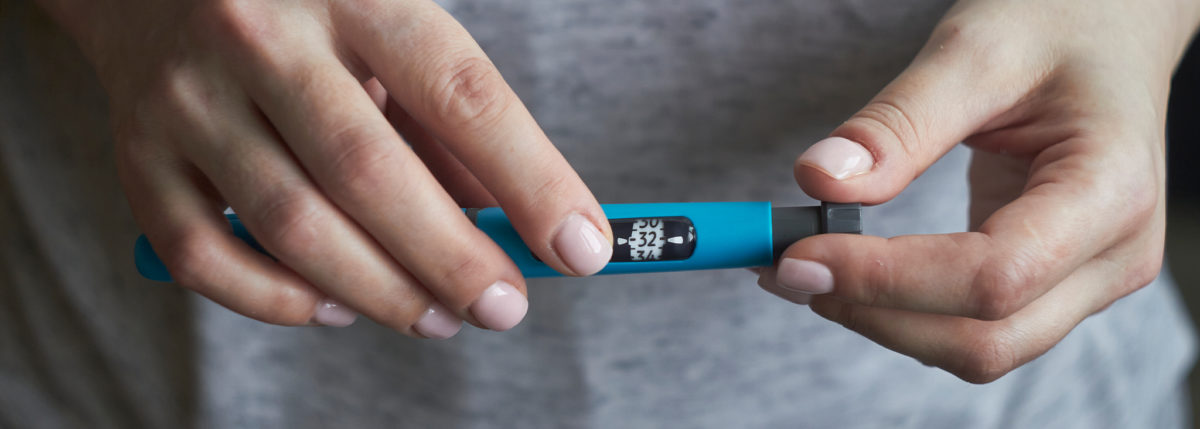Insulin—At What Cost?
Editor’s Notes: a November 2018 study from Yale University found that one in four patients with diabetes at a clinic in the United States underused their prescribed insulin because of cost concerns. Read more on the dangers of insulin rationing here.
People who take insulin require consistently affordable and predictable sources of insulin at all times. If you or a loved one are struggling to afford or access insulin, you can build custom plans based on your personal circumstances through our tool, GetInsulin.org.
It’s been nearly 100 years since the first injection of life-saving insulin was given to Leonard Thompson, forever changing the outcome of a type 1 diabetes diagnosis. For a drug that’s been around for almost a century, it may come as a surprise to you that it’s currently on the list for The 10 Most Expensive Liquids in the World and is yet to have a generic version.
According to the Washington Post, small changes to existing formulas keep insulin prices high and generics out of reach—despite the fact that the original patent expired over 75 years ago. This has been an increasing financial burden to the many who are insulin-dependent and has recently caught the attention of US politicians.
In November, Senator Bernie Sanders and Representative Elijah Cummings called for a federal investigation into collusion over insulin pricing between the three main insulin manufacturers, an accusation that spokespeople from Eli Lilly, Novo Nordisk, and Sanofi have adamantly denied. Sanders and Cummings noted that patients paid more than three times as much for their insulin in 2013 than they had in 2002 in a letter addressed to the Attorney General and the Federal Trade Commission.
T1International, a nonprofit based in London, UK, conducted an Insulin & Supply Survey, which found that a vial of Novolog (manufactured by Novo Nordisk) costs anywhere between $14 and $300 for consumers paying out-of-pocket in the U.S. The survey also found that the out-of-pocket sticker price on Humalog (Lilly) reaches over $400.
“America is one of the few countries I have been to where the government does not negotiate the price of drugs for our citizens. The [global] pricing has changed for inflation, but it is nothing compared with what you see in America,” says Erin Little, founder of type 1 diabetes nonprofit Sucre Blue.
Access to insulin isn’t just an American problem. Even with government regulation, the fact remains that, for many people living with type 1 all over the world, insulin is something that is frustratingly unavailable or unaffordable—or both.
Life for A Child works to provide sufficient insulin and syringes, among other resources, to over 18,000 young people with diabetes in 43 countries around the world. In a recent report examining the financial cost of type 1 in 15 lower-income countries, IDF concluded that “insulin is essential for people with type 1 diabetes, but it is still not readily accessible, even for children, on an uninterrupted basis in low-resourced countries […]. In a world where an artificial pancreas is on the horizon, no child should be dying from diabetes” (Diabetic Medicine).
In order to correct the surge of insulin pricing, Rowley from T1International proposes that “the public demand more information from pharma companies.” And other organizations are jumping onboard like the ADA that developed a petition for affordable insulin. Scientists are also researching open-source insulin to break free of patent regulations.
Rowley says, “T1International will not stop fighting for accountability and transparency from the pharmaceutical sector, and continued price increases will only increase our commitment to these efforts. There is still such a long way to go, but the USA can set a precedent for the rest of the world. If the government finds ways to curb increases and lower prices, if they ensure no one dies because they cannot afford their vital medication, we will be on track for global insulin price regulation and greater transparency.”
Rowley also suggests looking to the online community: “The biggest trend is that more and more people are taking notice of high insulin costs, particularly in the US. This means there are more advocates shouting louder and taking more action to fight for #insulin4all. More engagement means more potential for real change.”
Erin from Sucre Blue suggests sticking together and expanding our community: “Three major US policies have impacted our work: Affordable Care Act (ACA), Trans Pacific Partnership (TPP), and 21st Century Cares Act. All three have very national and global implications for pharmaceuticals, patents, incentive systems, and of course implications for patients, both rich and poor.
Our fight for human rights begins with each one of us understanding that we need to help others because we could find ourselves in the same situation. I think we need to learn how to come together as a community and advocate for all chronic diseases, not just diabetes.”
References –
Diabetes UK: Pioneer: Leonard Thompson
The Washington Post: Why treating diabetes keeps getting more expensive
Bernie Sanders: Sanders/Cummings Letter to Department of Justice and Federal Trade Commission on Insulin
PBS NewsHour: Bernie Sanders requests federal investigation of insulin makers for price collusion
T1International: Insulin & Supply Survey
Ogle, G.D., Kim, H., Middlehurst, A.C., Silink, M., Jenkins, A.J. “Financial costs for families of children with Type 1 diabetes in lower-income countries.” Diabetic Medicine. 2016, 33: 820-826
International Diabetes Federation: Life For A Child
American Diabetes Association: Stand Up for Affordable Insulin
Popular Science: These biohackers are creating open-source insulin





